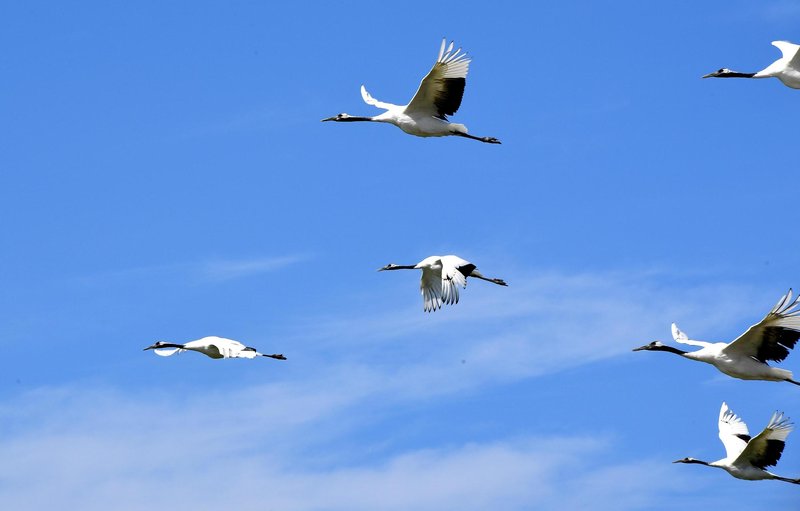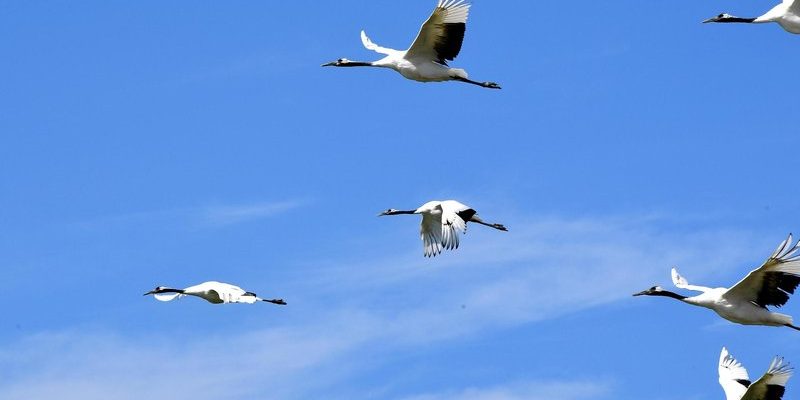
Now, you might associate cranes with construction sites or even the toy bird from your childhood’s favorite game. But today, we’re focusing on the true birds—specifically, their incredible behaviors and characteristics. Let me share ten intriguing facts that might just change the way you see these stunning birds.
Cranes Are Among the Tallest Flying Birds
You might be surprised to learn that cranes are among the tallest flying birds in the world. Depending on the species, they can stand anywhere from 3 to 5.5 feet tall! Imagine standing next to a tall friend and then realizing that their head reaches the same height as your shoulder. Cranes have long legs and long necks, which give them that impressive height.
Their wingspan is also something to marvel at—some can stretch up to 7 feet wide! This enormous span allows them to soar gracefully high above the ground. When you see a crane in flight, it’s like watching a snow-white airplane gliding effortlessly across the sky. You might be wondering why they need to be so tall; well, it helps them spot predators and find food across vast areas.
They Have Unique Courtship Dances
Here’s the thing: cranes are known for their intricate courtship dances, which are nothing short of a spectacular show. During the breeding season, these birds take part in elaborate displays that involve jumping, bowing, and calling out. Imagine being at a dance competition, where every step is perfectly synchronized. That’s how cranes woo each other!
Their graceful movements are not just for show; they strengthen the bond between mates. Through dancing, cranes communicate their readiness to mate and ensure they choose the right partner. It’s a beautiful ritual you might find yourself captivated by if you ever get the chance to witness it in person.
Cranes Are Highly Social Birds
You might think of cranes as solitary creatures, but they are actually very social animals. They often form large flocks, especially during migration or in feeding areas. Picture a big family reunion where everyone is eagerly catching up and sharing stories. That’s how cranes behave in their groups, creating a sense of community.
These flocks are not just for companionship; they also provide safety in numbers. When they feed or rest together, it’s easier to watch out for predators. By flocking, cranes can alert each other to danger and create a supportive environment for their young ones. It’s a beautiful example of teamwork in nature.
There Are 15 Different Species of Cranes
You might be surprised to discover that there are 15 different species of cranes around the world. From the common sandhill crane to the rare whooping crane, each species has its own unique traits and habitats. Imagine having a favorite flavor of ice cream, and then realizing there are so many more you haven’t tasted yet. That’s what it’s like with cranes!
Some species are well known in specific locations, such as the Japanese crane, which holds cultural significance in Japan. Others, like the demoiselle crane, are known for their striking appearance with long, flowing plumes. Each crane species has adapted to its environment, showcasing the incredible diversity of nature.
Cranes Have Long Lifespans
You might not realize that cranes can live quite a long life—sometimes up to 30 years in the wild! They have a few tricks up their sleeves for longevity. For one, their social structure and flocking behavior help them avoid predators, while their careful foraging habits ensure they find enough food.
In captivity, cranes can live even longer, with some reaching 50 years old. That’s like discovering a dear friend whose birthday you’ve celebrated for decades. Their long lifespan allows them to form strong bonds and share experiences, which adds to the richness of their social lives.
Cranes Are Omnivorous
You might picture cranes standing around in water, eating fish—all that elegance must come with a fancy diet, right? Actually, cranes are omnivorous, which means they eat a variety of foods! They enjoy a balanced diet that includes grains, seeds, tubers, and small animals like insects or even amphibians.
When cranes forage, they use their long beaks to probe the ground or water for tasty snacks. Imagine a chef carefully choosing ingredients for a gourmet meal—that’s how cranes are when searching for food. Their flexibility in diet helps them survive in different environments, whether they’re wading through marshes or strolling through fields.
They Have Strong Family Bonds
Cranes are known for their strong family ties. After mating, they usually stay together for life, raising their chicks as a united front. This commitment is evident in how both parents care for their young. Imagine a loving couple who team up to provide the best for their kids; that’s how cranes operate.
The parents teach their chicks hunting techniques and survival skills, preparing them for life on their own. This nurturing instinct helps ensure the next generation of cranes is strong and capable. When you see a family of cranes together, it’s a heartwarming reminder of the importance of family in the animal kingdom.
Some Cranes Migrate Long Distances
You might be amazed to learn that certain crane species are epic migrators, traveling thousands of miles each year. For instance, the whooping crane migrates from Canada to Florida for the winter, covering around 2,500 miles! That’s like going on a really long road trip, but without a GPS—just instinct guiding their way.
During migration, cranes fly in a “V” formation, which helps them conserve energy and communicate with one another. It’s a remarkable display of teamwork and planning. When you see them flying overhead, you can’t help but admire the dedication it takes to navigate such vast distances.
Cranes Are Symbols in Many Cultures
Finally, let’s talk about the cultural significance of cranes. Throughout history, these birds have been important symbols in various cultures. In Japan, for instance, the crane represents longevity and good luck. There’s a popular belief that folding a thousand origami cranes can grant you a wish.
In other cultures, cranes are seen as messengers of peace or are associated with love and fidelity. These meanings reflect the deep connection humans have felt with cranes over time, seeing them as more than just birds. It’s fascinating how one creature can hold such varied interpretations and inspire art, mythology, and hope across different societies.
In conclusion, cranes are truly remarkable creatures that deserve more appreciation. From their impressive height and unique courtship dances to their strong family bonds and rich cultural significance, there’s so much to admire. So, the next time you spot a crane, take a moment to appreciate the grace and wonder these birds bring to our world.

